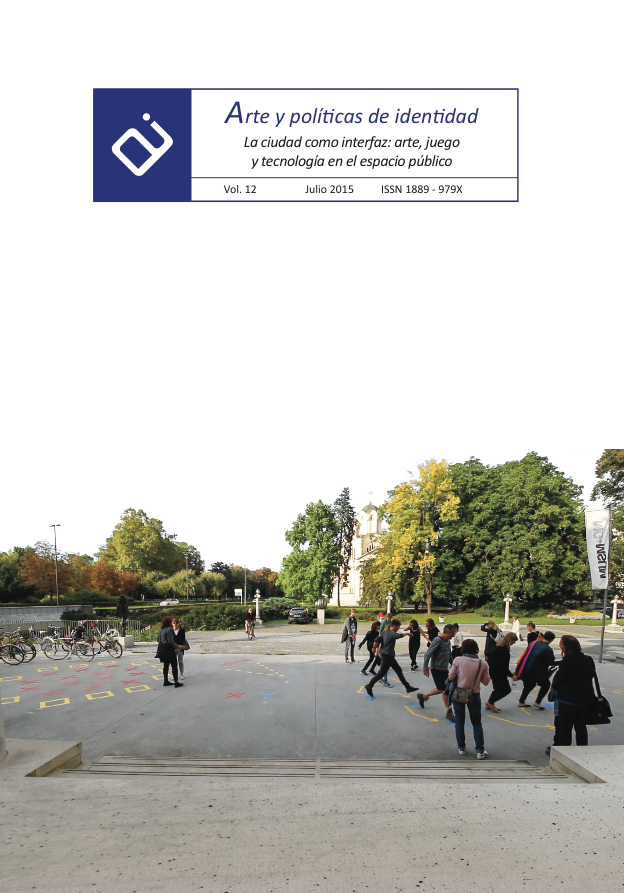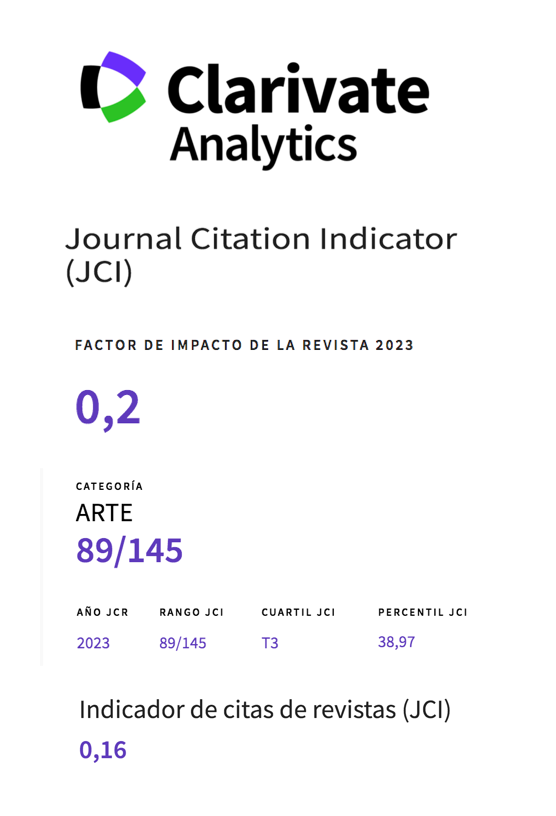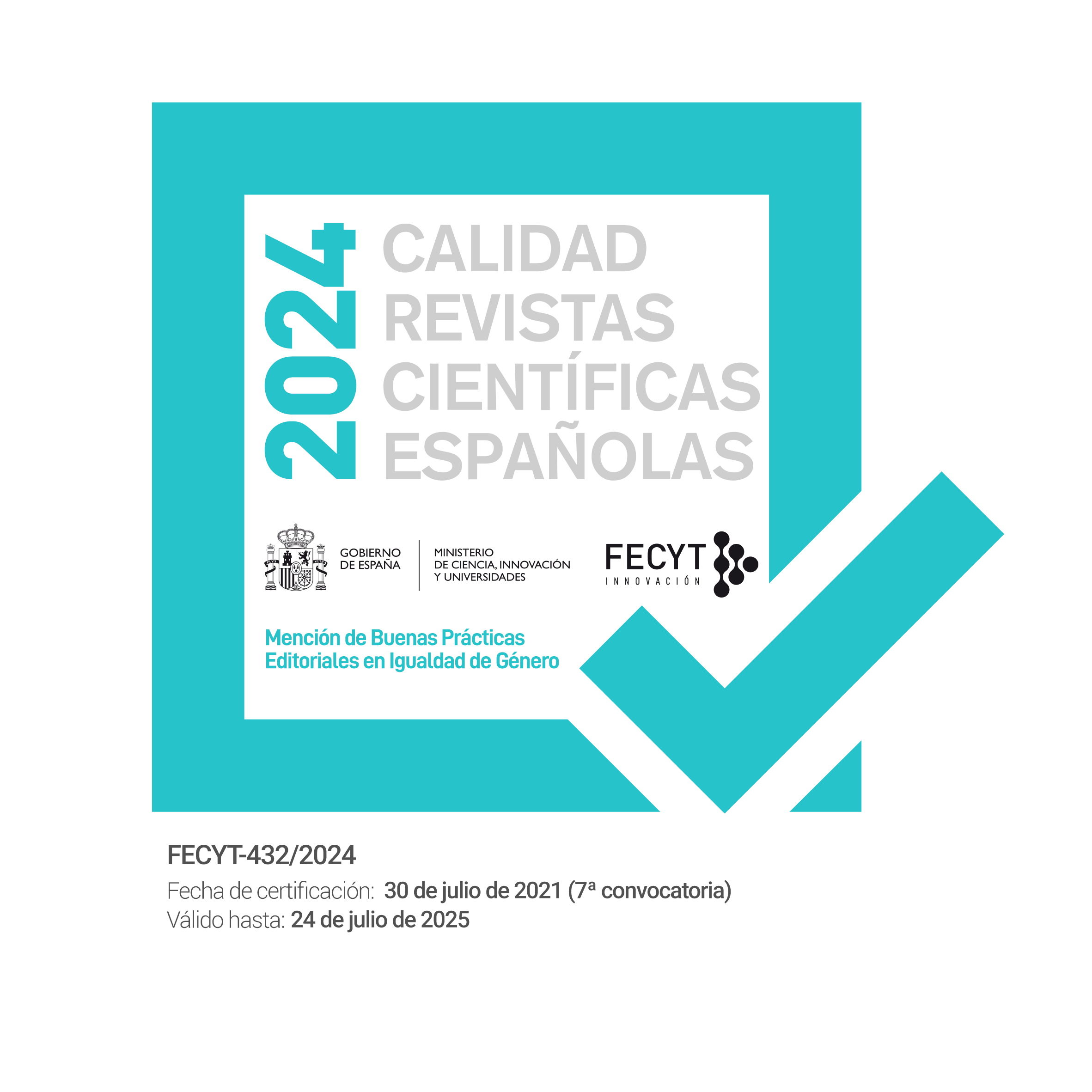Urban Interaction Design: La convergencia de disciplinas hacia una nueva forma de hacer ciudad
Resumen
En un momento de crisis del modelo tradicional de las políticas urbanas y coincidiendo con la generalización de una compleja infraestructura digital en la sociedad conectada, el papel de la ciudadanía se sitúa como gran debate. Si bien determinados discursos se presentan como irreversibles y unívocos respecto a esta relación entre vida urbana y tecnología, el artículo plantea la posibilidad de construir discursos alternativos a partir de diferentes prácticas de diseño de interacción urbana que están confluyendo en el espacio urbano como espacio para construir ciudad y ciudadanía.Descargas
-
Resumen282
-
PDF313
Citas
Bell, G. y Dourish, P. (2006). Yesterday ́s tomorrows: notes on ubiquitous computing ́s dominant vision. Personal Ubiquitous Computing (2006)
De Lange, M. y De Waal M. (2012). Ownership in the Hybrid City. Amsterdam: Virtueel Platform
De Waal, M. (2011a). The ideas and ideals in urban media theory. En Foth, M., Forlano, L., Satchell, C. y Gibbs, M. (eds). (2011). From Social Butterfly to Engaged Citizen: Urban Informatics, Social Media, Ubiquitous Computing, and Mobile Technology to Support Citizen Engagement, falta página Cambridge: MIT Press
De Waal, M. (2013). The city as interface. How new media are changing the city. Rotterdam: Nai 010
Fernández, M. (2013). Smart cities of the future. En Hemment, D. y Townsend A. (2013). Smart citizens. falta página Manchester: Future Everything
Foth, M., Forlano, L., Satchell, C y Gibbs, M. (eds.) (2011). From Social Butterfly to Engaged Citizen: Urban Informatics, Social Media, Ubiquitous Computing, and Mobile Technology to Support Citizen Engagement. Cambridge: MIT Press
Galloway, A. (2008). A Brief History of the Future of Urban Computing and Locative Media, (Tesis doctoral) Ottawa: Carleton University
Goodspeed, R. (2014). Smart cities: moving beyond urban cybernetics to tackle wicked problems. Cambridge Journal of Regions, Economy and Society Advance Falta volúmen revista número y página
Greenfield, A. (2006). Everyware: The Dawning Age of Ubiquitous Computing. Berkeley: New Riders Publishing
Greenfield, A. (2013). Against the smart city. Nueva York: Do Projects
Greenfield, A. y Shepard, M. (2007). Urban computing and its discontents, situated Technologies Pamphets 1. Nueva York: The Architectural League of New York
Hill, D. (2012). The city that smart citizens built. City in a box Volume 34 falta página
Iveson, K. (2011). Mobile media and the strategies of urban citizenship: discipline, responsibilisation, politicisation, en Foth. M, Forlano, L., Satchell, C. y Gibbs, M. (eds). (2011). From Social Butterfly to Engaged Citizen: Urban Informatics, Social Media, Ubiquitous Computing, and Mobile Technology to Support Citizen Engagement. Cambridge: MIT Press
Kitchin, R. (2014). The Real-time City? Big Data and Smart Urbanism. Geo Journal 79. 1–14.
Kitchin, R. y Dodge, M. (2011). Code/Space. Software and Everyday Life. Cambridge: MIT Press.
Paulos, E. (2009). Manifesto of open disruption and participation. Recuperado de http://www.paulos.net/papers/2009/manifesto2009.html
Shepard, M. (2011). Sentient City. Ubiquitous Computing, Architecture, and the Future of Urban Space. Cambridge: MIT Press
Townsend, A. (2013). Smart Cities: Big Data, Civic Hackers, and the Quest for a New Utopia. New York: W. W. Norton & Company.
URBANIXD (2014a). Urban interaction design. Towards city making. Amsterdam: UrbanIxD, faltan AUTORES
URBANIXD (2014b). Interactions in hybrid urban space: the UrbanIxD exhibition. Catalogue. Zelina (Croacia): UrbanIxD faltan AUTORES
Vanolo, A. (2014). Smartmentality: The Smart City as Disciplinary Strategy. Urban Studies 51(5) 2013, 1-16
Weiser, M. (1991). The computer for the 21st century, en Scientific American, September 1991 faltan páginas
Works published in this journal are subject to the following terms:
- The Service of Publications from the University of Murcia (publishing house) keeps the published works’ copyrights, and favors and allows the reuse of these works under the license indicated in point 2.
- Works are published in the journal’s online edition under the license Creative Commons Reconocimiento-NoComercial-SinObraDerivada 3.0 España(texto legal). They can be copied, used, disseminated, transmitted and publicly exhibited, as long as: i) the author and original source of publication are cited (journal, publishing house and work’s URL); ii) they are not used for commercial purposes; iii) the existence and specifications of this license are mentioned.
3. Conditions for auto-file. It is allowed and encouraged that authors share electronically their pre-print version (the pre-reviewed version) and /or post-print version (the reviewed and accepted version) of their Works before the publication, since it promotes its circulation and dissemination. RoMEO color: green.










